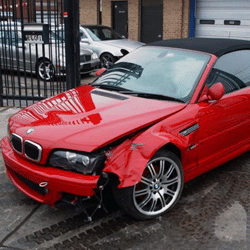Speeding continues to be a common problem for motorists all over the world. It is a hazard not only for drivers and passengers, but also for pedestrians in highly populated areas of the country. But more importantly, speeding can also be dangerous for the person behind the wheel.
Interestingly enough, speeding has been around for as long as people have had a mode of transportation. In fact, one of the earliest cases of documented had taken place in Seattle, 1879 when two men were fined for riding their horses too fast. Since then, speeding has moved on from galloping stallions to irresponsible roadsters.
But speeding is more than just a blatant disregard of local road law. It’s also one of the most common reasons behind road accidents; and there are numbers to prove it.
The Danger behind the Speedometer
Speeding is considered a minor violation, but it accounts for 15% of accidents where an individual is seriously injured and 14% of all collisions where an individual is hurt. But the numbers begin to spike once fatalities are taken to consideration. Speeding accounts for almost a quarter of road accidents where an individual is killed. For a minor violation, speeding becomes one of the most dangerous traffic violations on the road.
Another staggering statistics is the frequency in which speeding occurs. A recently conducted study revealed that one in every six drivers receives a speeding ticket every year. This amounts to over 6 billion dollars in speeding ticket fines annually. That number only accounts for those incidents that are reported and properly documented. This makes the actual number of speeding incidents much higher.
Suffering the Consequences of Speeding
The real danger behind speeding is actually not the speed itself, but its greater potential for driver error. At higher speeds, drivers are unable to react quickly enough to avoid obstacles and other cars. It also prevents drivers from having a clearer idea of their surroundings, focusing instead at the split second few meters in front of their car. But upon impact, a vehicle’s inherent speed becomes a big determining factor on the danger of the actual collision.
A study conducted on the consequences of speeding revealed that two thirds of all fatal crashes have happened in areas where the speed limit is less than 30 mph. This is because the chances of a pedestrian being killed on the road drastically increase once a car goes above 30 mph. In fact, a person is three to almost six times more likely to be killed when hit by a car going as fast 40 mph, instead of by one going less than 30 mph.
Government official and traffic enforcers are always implementing new rules and laws to curb the impact and frequency of speeding around the country. Unfortunately, as long as drivers continue to think that speeding is as “minor” a problem as the country says it is, these numbers won’t change.




 Follow
Follow

